Shoes
Electricura Shoes
John Wilson Gibbs claimed that his patented "electric shoe" would cure rheumatism.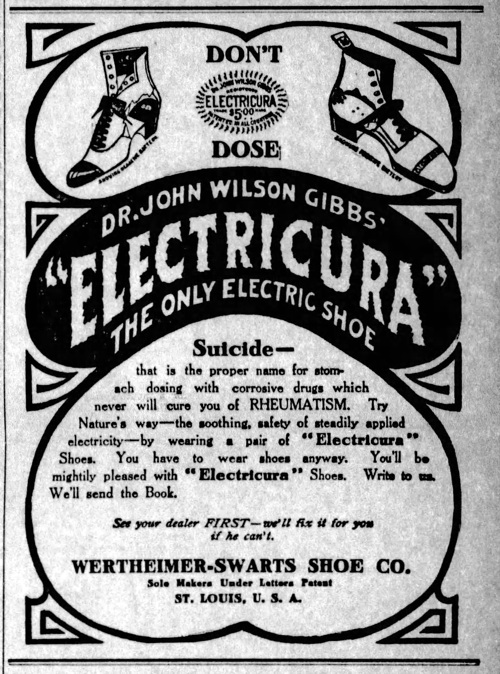
Kansas City Star - July 23, 1907
How the shoes generated electricity is explained in his 1903 patent (No. 740,548). They contained zinc and copper nails. The two metals, when combined with sweaty feet, would form a galvanic cell, producing a mild electric current.
The sole of the shoe is shown at A, and in the upper surface thereof there are driven or otherwise inset a series of nails or studs B, with each of which there is associated a similar nail or stud C. The studs of the series B are preferably of zinc and those of the series C preferably of copper, thereby providing pairs of elements of dissimilar metals or opposite in sign such that when contacted with by the foot of the wearer from the influence of the warmth or moisture of the person or for other reasons an electric current will be generated, passing from one element to the other through the body of the wearer. The medical and therapeutic effects of such a current are well known, and I claim herein only the specific construction of the means for obtaining such a current.
What he doesn't mention is that the metals would quickly corrode, at which point the electricity would stop. Not that such a tiny amount of electricity would have had any therapeutic effect anyway.
Of course, this was back in the era when adding the word "electric" to any product was a sure way to give it more consumer appeal. A long time ago I had a brief article published in Smithsonian magazine in which I gave some examples of this phenomenon.
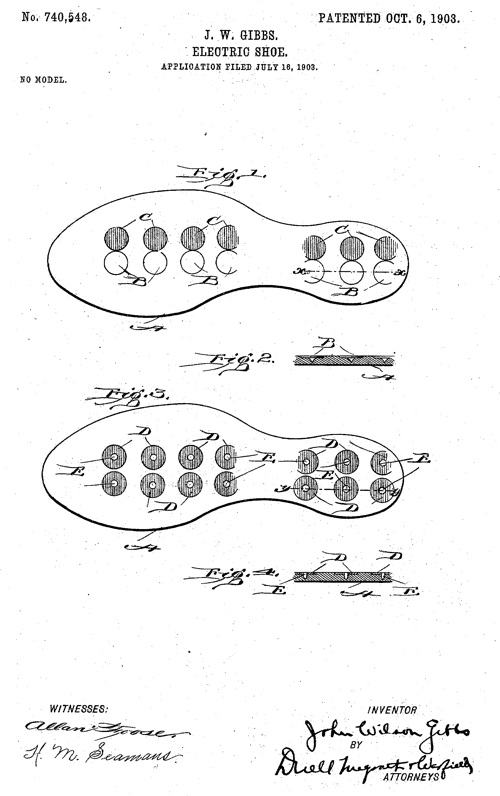
Posted By: Alex - Mon Mar 11, 2024 -
Comments (3)
Category: Patents, Shoes, 1900s
Power Athletic Shoes Commercial
Our shoes will crush all opposition and restore the Fatherland!
Posted By: Paul - Sun Mar 26, 2023 -
Comments (2)
Category: Dictators, Tyrants and Other Harsh Rulers, Excess, Overkill, Hyperbole and Too Much Is Not Enough, Advertising, Shoes, 1990s
Get Slim Slippers
These were mini slippers that supposedly helped one lose weight. How? Something to do with reflexology and magnets. And also, I assume, the extra effort required to balance in them.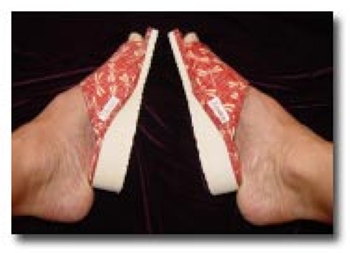
They were sold via the website GetSlimSlippers.com, which no longer exists (but is archived at the Wayback Machine).
Quackwatch.org has an article by someone who tried them out to see if they would actually work:
Related post: Slimming Insoles
Posted By: Alex - Thu Mar 23, 2023 -
Comments (1)
Category: Shoes, Dieting and Weight Loss
Shoes with Hinged Soles
There must be a good reason why, for millennia now, all shoes have come with unibody-construction soles. But Robert M. Lyden thought differently.Full patent here.
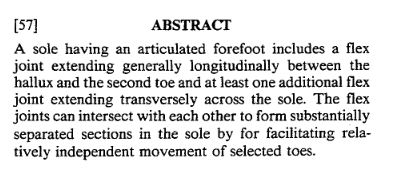
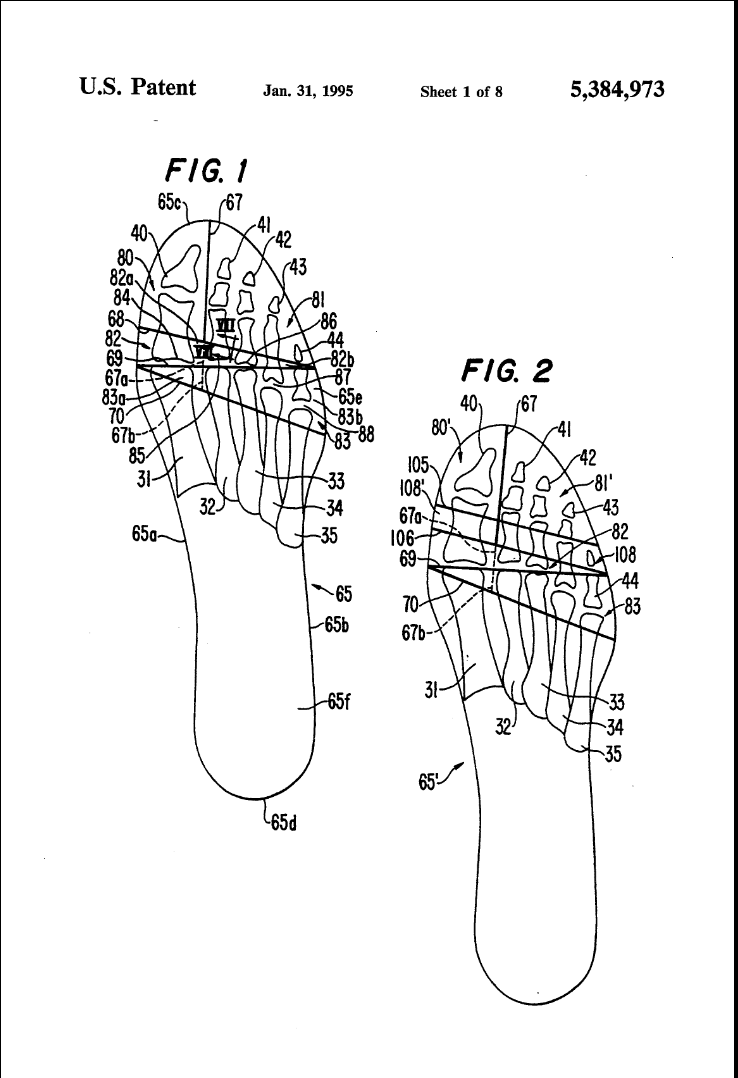
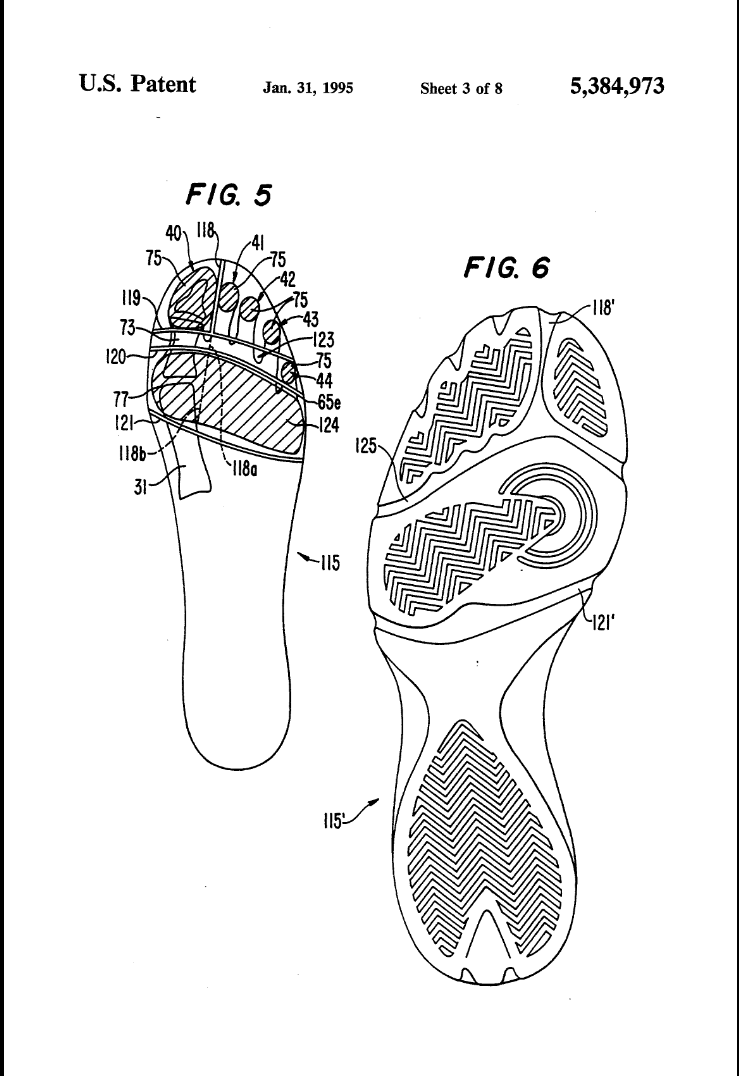
Posted By: Paul - Tue Jan 17, 2023 -
Comments (4)
Category: Body, Inventions, Patents, Shoes, 1990s
Follies of the Madmen #550
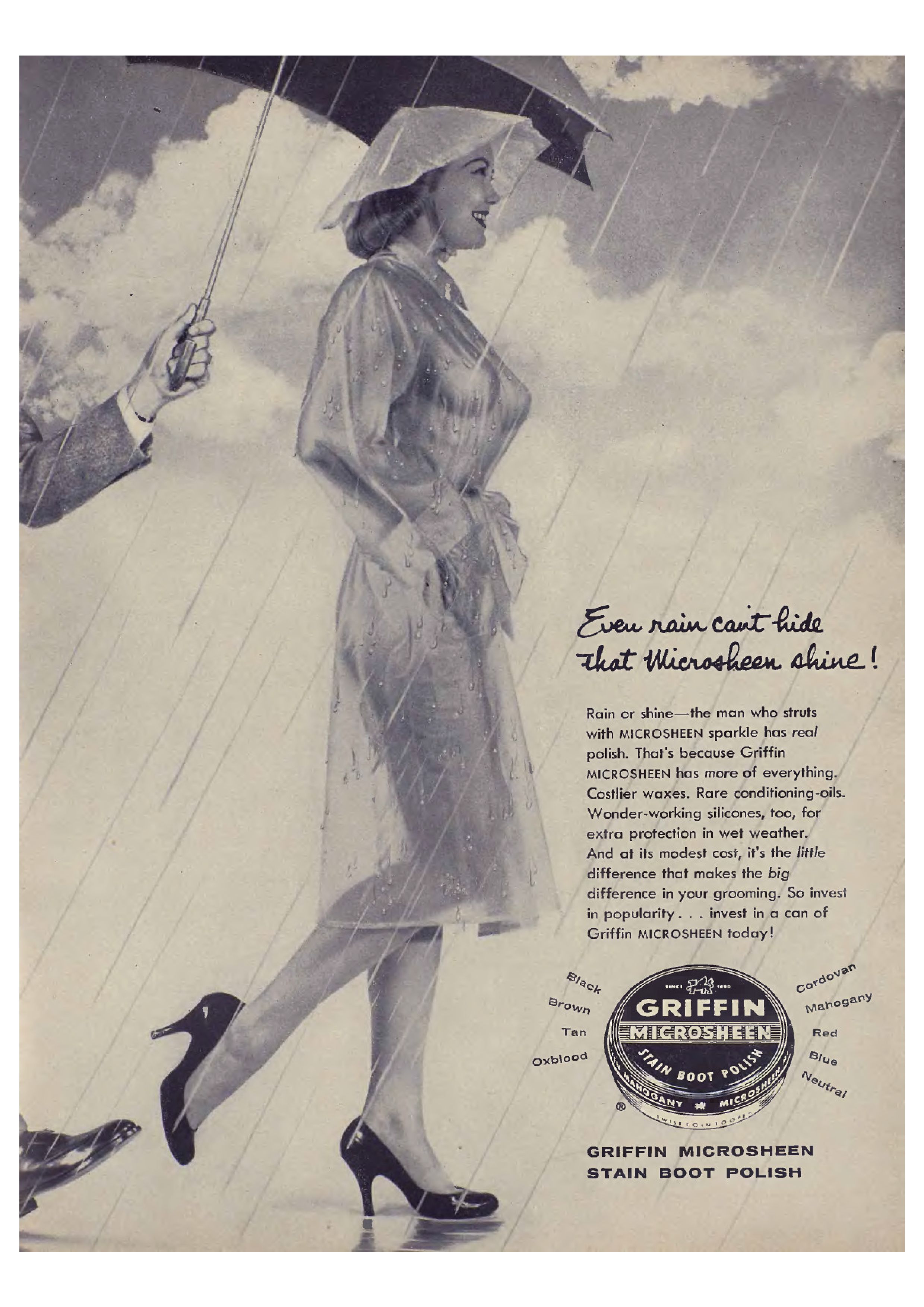
Posted By: Paul - Mon Dec 19, 2022 -
Comments (2)
Category: Fashion, Shoes, Advertising, Public Indecency, Twentieth Century
Space Boots
Released by Ideal Toy Corp. in 1969:"space boots of adjustable molded air cushions so that the child can experience the floating feeling of walking on the moon."
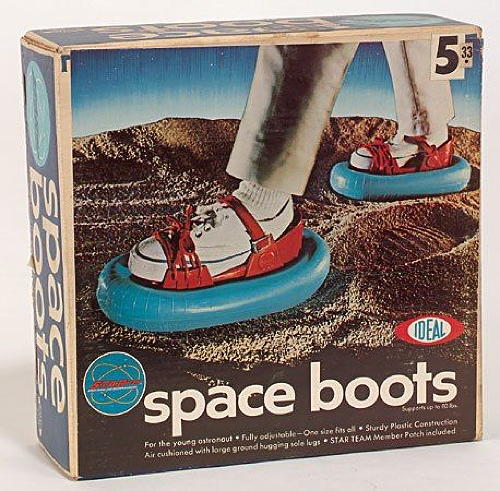
source: awmok.com
Posted By: Alex - Fri Sep 09, 2022 -
Comments (3)
Category: Spaceflight, Astronautics, and Astronomy, Toys, Shoes
Concrete Heels
From designer Mel Diosa.Don't wear them while swimming.
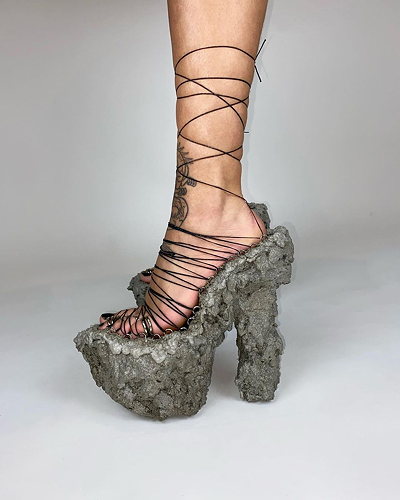
Posted By: Alex - Fri Feb 18, 2022 -
Comments (6)
Category: Shoes
Double-Heeled Shoe
Patent No. 7,574,819, granted to Jin Rie of Los Angeles: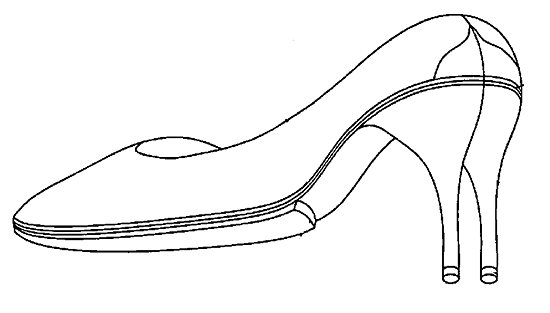
But why stop at two heels when you could have seven?
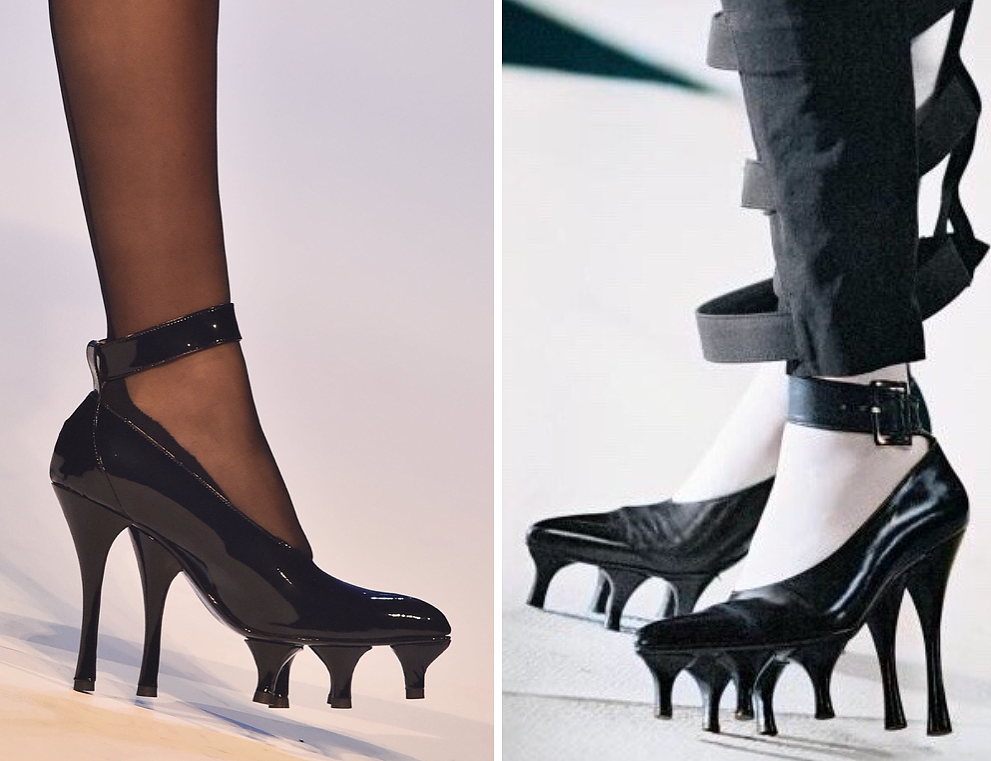
'Cleat Heels' from Jean Paul Gaultier's Spring 1993 collection
Posted By: Alex - Tue Nov 16, 2021 -
Comments (3)
Category: Patents, Shoes
Nail Heel Boots
Footwear from Maison Margiela. Fall 2008. Looks like they're no longer available for purchase. But if they were, they'd cost you $1490.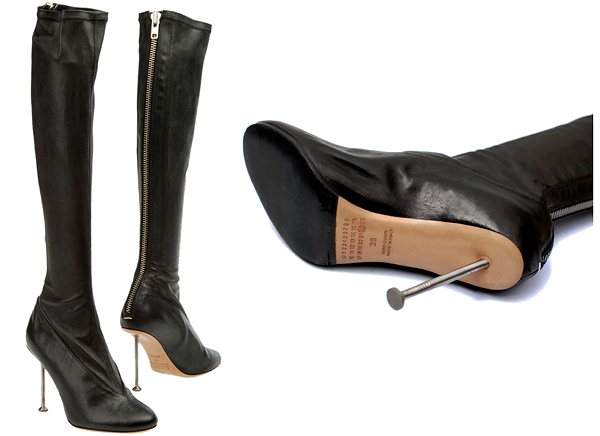
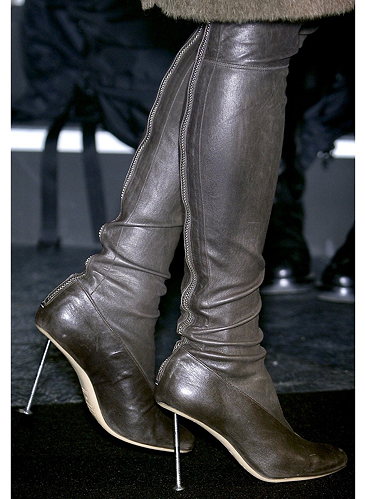
via Tapireye
Posted By: Alex - Thu Oct 14, 2021 -
Comments (2)
Category: Shoes
Wrinkle Chaser
Unusual job: A wrinkle chaser uses a hot-air jet to 'chase' wrinkles out of leather boots and shoes. This is done using a wrinkle chaser machine.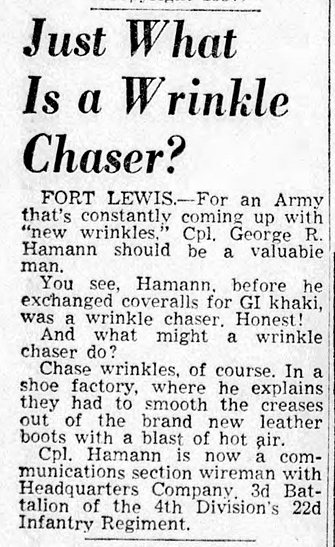
Tacoma News Tribune - Jan 6, 1957
Posted By: Alex - Sun Aug 15, 2021 -
Comments (1)
Category: Jobs and Occupations, Shoes

| Who We Are |
|---|
| Alex Boese Alex is the creator and curator of the Museum of Hoaxes. He's also the author of various weird, non-fiction, science-themed books such as Elephants on Acid and Psychedelic Apes. Paul Di Filippo Paul has been paid to put weird ideas into fictional form for over thirty years, in his career as a noted science fiction writer. He has recently begun blogging on many curious topics with three fellow writers at The Inferior 4+1. Contact Us |




